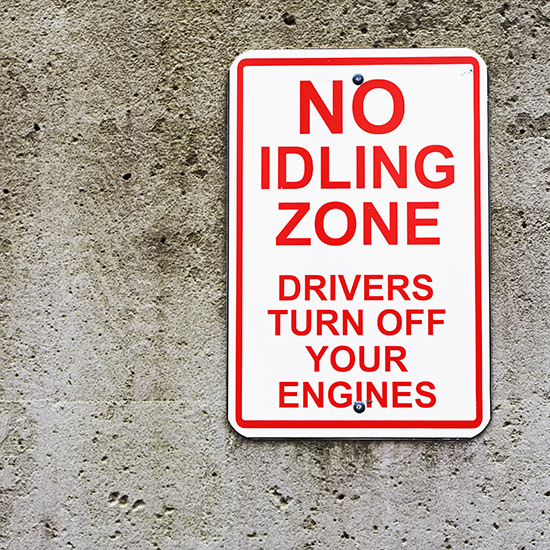 Anti-idling regulations are just one small part of the overall big picture to reduce emission. In the past 20 years, anti-idling regulations have become mainstream and, for the most part, well known and adopted.
Anti-idling regulations are just one small part of the overall big picture to reduce emission. In the past 20 years, anti-idling regulations have become mainstream and, for the most part, well known and adopted.
It doesn’t matter if you are an avid environmentalist, a general supporter, or a down-right naysayer to global warming, anti-idling regulations have benefits that span past the environment and straight to your wallet.
Protecting the Environment
Anti-idling regulations stemmed from the overall need to develop solutions to the environmental effects pollution has. Idle reduction strategies have played a big role in reducing emissions of carbon dioxide, nitrogen oxides, carbon monoxide, particulate matter and other harmful pollutants.
By-product Benefits
Secondary to the main benefit of anti-idling regulations has brought forth a sea of additional, hit you right at home, benefits that anyone can get behind. It is sparked new technology, reduced fuel consumption, and saved everyone quite a bit of money.
Anti-Idling and Trucking
It doesn’t matter if you are a company driver, or sitting behind the wheel of your own truck, you have to follow the many anti-idling regulations that very from state to state and city to city.
On the bright side, many companies pay their company drivers idle incentives for keeping idle times within a certain percentage – more money in your pocket. Owner Operators receive the direct benefit of using less fuel by not allowing it to blow out the stack.
This is all well and good until you find yourself in a situation where you just need to idle the truck. When safety is an issue – idle. This is especially true in extreme heat, where you need to idle to keep the A/C running and extreme cold when the bunk heater just won’t cut it.
Good news is that every anti-idle regulation has this safety feature exemption built in. Most of the existing anti-idling by-laws exempt vehicles from idling prohibitions when temperatures are higher than 27°C (80.6oF) or lower than 5°C(41oF) so that drivers can operate air conditioners or heaters to maintain passenger comfort in the vehicle. Bunk Heaters and APU units go a long way to help heat and cool without idling.
New Tech Doesn’t Always Cut It: Tips for idling when you have to.
Bunk Heaters and APU Units can only do so much – while they are great for most days, there are days when you’re just going to have to idle the truck. Here are some tips to help keep you idling safely:
- When idling, fumes from the engine can enter the cab. Crack a window or bunk vent to help keep the fresh air circulating.
- Some motors could require you to idle the engine at 900 RPM to 1200 RPM to ensure the oil has enough pressure to reach the top of the heads. If you’re unsure of where you should set your RPMs for idling, check with your shop or maintenance provider.
- Check for exhaust leaks during your pre and post trips. Or better yet, get yourself a carbon monoxide detector.
- Never leave the truck with the engine idling. If you have to go inside, shut the truck down.
- Short idles, where the truck idles for two to three minutes (usually you’re going inside to make a purchase), are completely avoidable and unnecessary. These short idles add up to a lot over the course of the lifetime of the truck, it just doesn’t feel like it at the time.
With the new technology under the hood, the financial gains in your pocketbook and the help to the environment, idling is really only warranted in extreme conditions. Use your best judgment, if cracking a bunk vent to let in the cool night air will be enough to keep you cool, do it. If an extra blanket will keep you warm – use it. As an Owner Operator, you will keep money in your pocket and save your truck’s engine miles of undriven life. As a company driver, you may receive the benefit of idling incentives.





